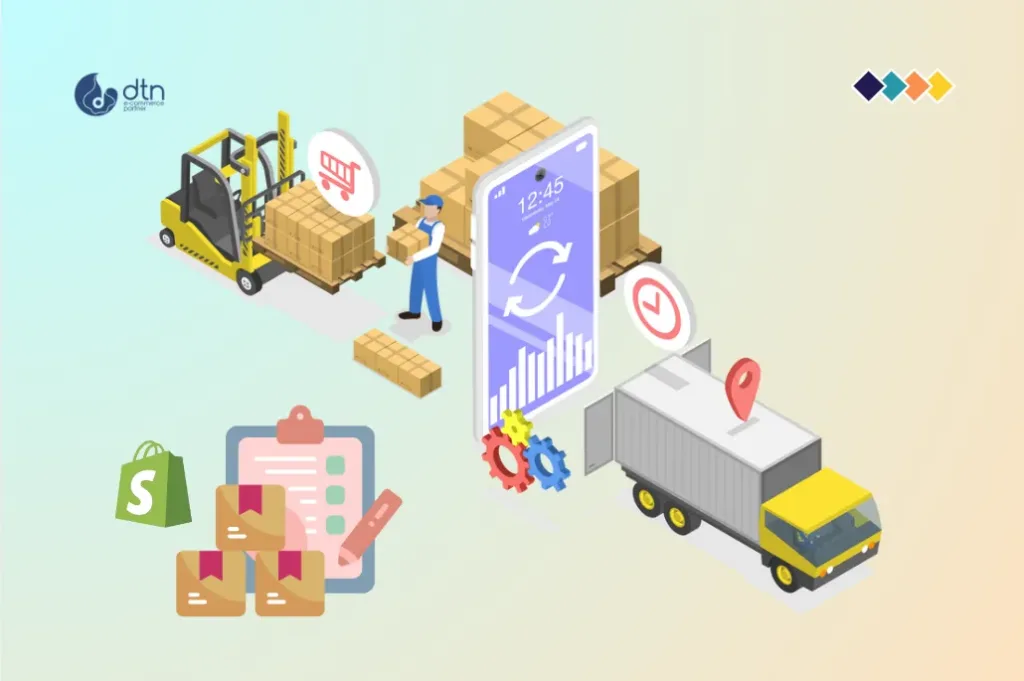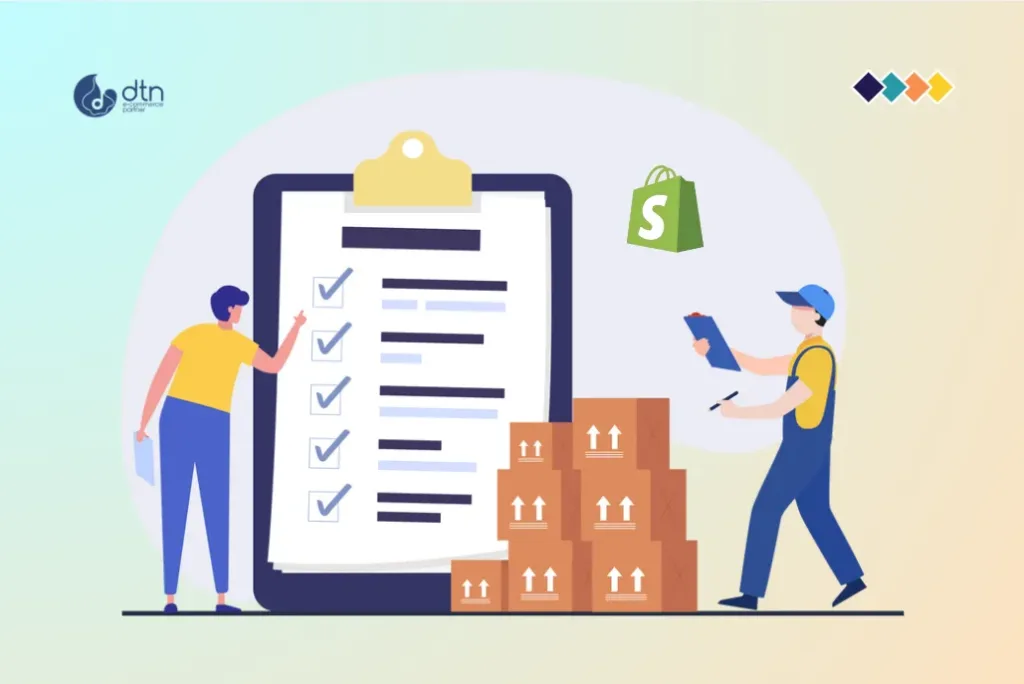Inventory management. The very phrase can send shivers down the spine of even the most seasoned Shopify entrepreneur. It’s the unsung hero (or villain, depending on your approach) that directly impacts your profitability, customer satisfaction, and overall business success. Failing to properly manage your inventory can lead to lost sales, unhappy customers, increased storage costs, and ultimately, a struggling business. But fear not! This comprehensive guide will equip you with the knowledge and strategies to conquer your Shopify inventory and transform it from a source of stress into a well-oiled machine.
Table of Contents
Understanding the Fundamentals: Beyond Just Numbers
Effective inventory management is more than just tracking numbers. It’s a holistic process encompassing several key areas:
- Accurate Forecasting: This is the cornerstone. Accurately predicting future demand allows you to optimize stock levels, minimizing the risk of stockouts (lost sales) and overstocking (tied-up capital). Consider analyzing past sales data, seasonal trends, marketing campaigns, and external factors (economic conditions, competitor actions) to build a robust forecast. Tools like Shopify’s built-in analytics and third-party forecasting apps can significantly assist.
- Real-time Inventory Tracking: Knowing exactly what you have, where it is, and its current status is crucial. Shopify offers basic inventory tracking, but integrating with dedicated inventory management apps can provide a more robust and detailed view, especially for businesses with multiple warehouses or locations. This includes tracking variations (size, color, etc.) and batch numbers.
- Efficient Order Fulfillment: The speed and accuracy of order fulfillment directly impact customer satisfaction. A well-organized warehouse and efficient picking and packing processes are vital. Consider using barcode scanners, warehouse management systems (WMS), and fulfillment automation tools to streamline this process. For high-volume businesses, exploring 3PL (third-party logistics) options might be a cost-effective solution.
- Regular Stock Audits: Physical inventory counts are crucial to verify your system’s accuracy. Discrepancies between your recorded inventory and physical stock can indicate issues like theft, errors in data entry, or damage. Regular audits, combined with cycle counting (auditing a smaller portion of inventory regularly), help maintain accuracy.
- Low Stock Alerts: Setting up low-stock alerts is crucial for preventing stockouts. Shopify and many inventory management apps offer this feature, allowing you to proactively reorder products before they run out. Consider setting alert thresholds based on your lead times (time to receive new stock) and sales velocity.

Leveraging Shopify’s Built-in Features
Shopify offers basic inventory management tools that are sufficient for smaller businesses.
- Inventory Tracking: Shopify allows you to track inventory levels for each product variant. You can set inventory quantities, receive low-stock alerts, and track inventory across multiple locations (requires additional setup).
- Inventory Policies: You can define specific inventory policies, such as automatically disabling “Buy” buttons when items are out of stock. This prevents accidental orders and keeps customer expectations aligned.
- Reporting: Shopify’s built-in reports provide insights into your sales and inventory levels, allowing you to identify trends and make data-driven decisions.
- Multi-Location Inventory: While not as robust as dedicated apps, Shopify allows you to manage inventory across multiple locations. This requires careful setup and consistent data management.

Exploring Third-Party Inventory Management Apps
For businesses experiencing rapid growth or requiring more advanced features, integrating with third-party inventory management apps is highly recommended. These apps typically offer:
- Advanced Forecasting: More sophisticated forecasting algorithms that consider various factors for improved accuracy.
- Automated Reordering: Automatic generation of purchase orders based on pre-defined rules and parameters.
- Integration with Suppliers: Seamless integration with your suppliers to streamline the ordering process.
- Warehouse Management: Features specifically designed to manage warehouse operations, including picking, packing, and shipping.
- Real-time Visibility: Provides a comprehensive and real-time view of your entire inventory across multiple locations.
Popular Shopify inventory management apps include (but aren’t limited to):
- Cin7: A robust solution suitable for larger businesses with complex inventory needs.
- Sortly: A user-friendly app ideal for managing inventory across multiple locations.
- TradeGecko: Another comprehensive solution with advanced features like demand planning.
- InFlow Inventory: A popular choice known for its ease of use and affordability.

Best Practices for Success
- Regular Data Cleaning: Regularly review and clean your inventory data to ensure accuracy. This includes removing obsolete products and correcting any inconsistencies.
- ABC Analysis: Classify your inventory items based on their value and sales velocity (A items are high-value, high-volume; C items are low-value, low-volume). This allows you to focus your management efforts on the most important items.
- Effective Communication: Maintain clear communication with your team and suppliers to prevent delays and ensure efficient inventory management.
- Regular Reviews and Adjustments: Continuously review your inventory management processes and make adjustments as needed.

Conclusion: From Reactive to Proactive
Effective inventory management is a journey, not a destination. By understanding the fundamentals, leveraging Shopify’s features, exploring third-party apps, and implementing best practices, you can transform your inventory management from a reactive, stressful process into a proactive, strategic advantage. This will free up your time, reduce costs, and ultimately boost your bottom line, paving the way for a more successful and sustainable Shopify business. Remember, the key is to find the right tools and processes that fit your specific needs and scale with your growth.
Frequently Asked Questions
We’ve compiled a list of answers to common questions.
What is the importance of accurate forecasting in Shopify inventory management?
Accurate forecasting is essential because it helps you predict future demand, optimize stock levels, and avoid stockouts or overstocking. By analyzing past sales data, seasonal trends, marketing efforts, and external factors, you can make informed decisions about inventory needs, improving profitability and customer satisfaction.
How can Shopify’s inventory tracking features help manage stock effectively?
Shopify allows you to track inventory levels for each product variant, set low-stock alerts, and manage inventory across multiple locations. These built-in features help keep track of available stock in real time, ensuring you’re always aware of what’s on hand and preventing overselling.
What third-party apps can enhance Shopify inventory management?
Several third-party apps can extend Shopify’s capabilities, offering advanced forecasting, automated reordering, and real-time inventory visibility. Popular options include:
- Cin7: Ideal for larger businesses with complex inventory needs.
- Sortly: A user-friendly app for managing inventory across locations.
- TradeGecko: Provides features like demand planning and supplier integration.
- InFlow Inventory: Known for its ease of use and affordability.
What are the best practices for maintaining inventory accuracy in Shopify?
To ensure accurate inventory management:
- Conduct regular stock audits to match physical and system records.
- Implement ABC Analysis to prioritize high-value and high-sales items.
- Set up low-stock alerts based on your sales velocity and lead times.
- Keep clear communication with your team and suppliers to prevent delays.
How can I turn inventory management from a reactive to a proactive process?
To shift from reactive to proactive inventory management:
- Regularly review your inventory data and clean up obsolete products.
- Leverage forecasting tools and automation to predict and plan for demand.
- Continuously adjust your inventory strategies to keep pace with business growth and market changes.



